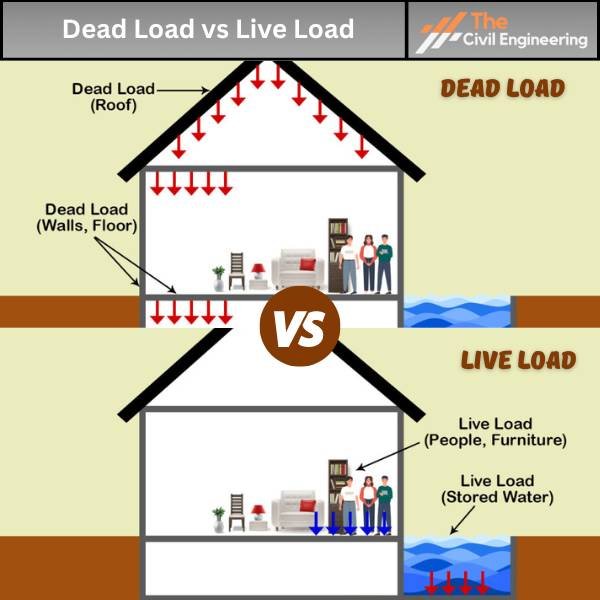Structural load is the actions or forces causing pressure on a structure tending to affect and produce deformations, stresses, and displacements.
Vertically applied loads, horizontally applied loads, and longitudinal loads are the most common load types.
Live load and dead load are vertically applied loads.

a. Live Load
This load changes over a period of time.
Walking people, moving furniture, etc, are the best examples of live load.
b. Dead load:
This load doesn’t change over a period of time.
Self-weight of structures like the weight of beams, columns, etc, are the best examples of dead load.
It can be calculated based on the weight of building materials specified and the volume used to construct structural components. This gives a good degree of accuracy.
Dead load = Volume of each member × unit weight of building materials based on codes.
The total dead load can be calculated by summation of each structural dead load.
| Read Also: 15+ Engineering Drawing Instruments With Images. |
2. Differences Between Dead Load and Live Load
| S.N. | Dead Loads | Live Loads |
| 1. | It is a gravity load. | It is imposed/dynamic moving load. |
| 2. | It is static or constant permanent load. | It is a temporary load. |
| 3. | It can be tension or compression. | It is a movable load moving without impact. |
| 4. | It doesn’t change over a period of time. | It changes over a period of time.
|
| 5. | The dead load may be due to the self-weight of the structure. | The live load may be due to furniture, humans, vehicles moving on the deck of bridges, etc. |
| 6. | For structural calculations to ensure the safer and durable design of building structures, tunnels, bridges, dams, etc.; it is important to assess dead loads information applied in the structure. | In order to maintain the structural strength and bearing capacity of structures; the live load is analyzed. Thus, structures should be capable to handle the live loads applied to them. |

